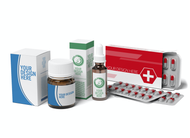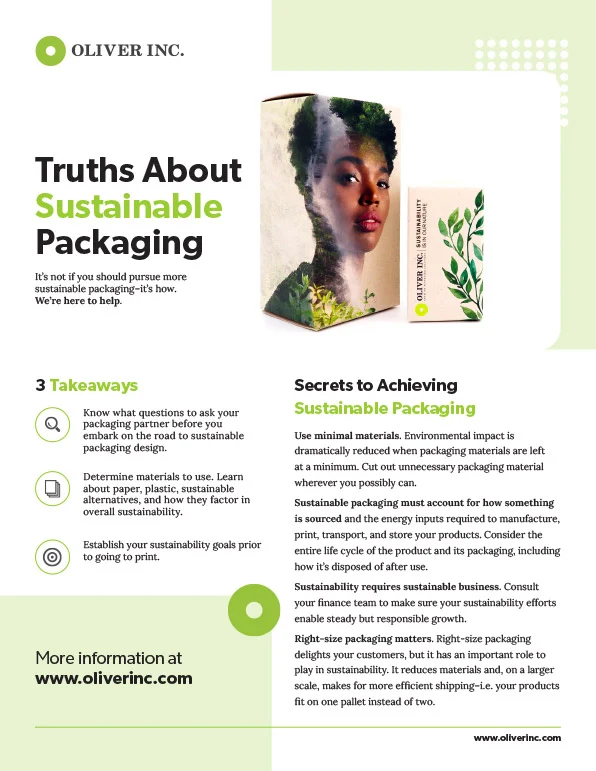Common Pitfalls to Avoid in Pharmaceutical Packaging Design
Posted by Oliver Inc. on 30th Sep 2025
Pharmaceutical packaging plays a much bigger role than merely holding the product. Not only is it the first thing that patients and healthcare professionals see: it also directly impacts safety, compliance, and even a drug’s success in the market. Therefore, designing effective packaging for pharmaceuticals is no easy task. There are regulations to follow, user needs to consider, and a long list of potential mistakes that can derail your efforts. Whether you're a designer, brand manager, or manufacturer, knowing what not to do can save you a lot of time, money, and stress.
To that end, read on below for some of the most common pitfalls in pharmaceutical packaging design and how you can steer clear of them:
Overlooking the User Experience
Designing packaging without thinking about the end user is one of the biggest mistakes that a company can make when it comes to pharmaceutical packaging design. It's easy to get caught up in meeting regulatory requirements and forget that real people – often elderly individuals or those with limited dexterity – need to open and use the product easily.
When a patient struggles to read tiny fonts or open a blister pack, that’s a design failure. Clarity and accessibility should be top priorities if you’re designing for an audience that includes older adults or people with disabilities. Packaging should be easy to open, instructions should be easy to follow, and all the important information should be clear and plainly visible. If the packaging isn’t user-friendly, it won’t matter how compliant or cost-efficient it is.
Ignoring Regulatory Compliance
Underestimating how strict and detailed pharmaceutical regulations are is another major pitfall. Each country or region has its own rules for packaging – what must be printed on the label, how the safety seals work, how the product is stored, and more. Failing to meet these standards can lead to product recalls, fines, or worse, endangering patients’ health.
To avoid this, your design team needs to closely collaborate with regulatory experts to ensure that every element of your packaging is covered. If you leave this step until the end, you risk having to redo your design from scratch – or, even worse, facing regulatory rejection just before launch.
Prioritizing Aesthetics Over Functionality
Everyone wants their product to look good. The world is obsessed with visuals, and a sleek design not only boosts brand perception – it can also build trust. However, looks should never come at the cost of function. You might be surprised to know that this happens more often than you think: the packaging might look beautiful, but it doesn’t protect the product properly or lacks critical information, which can lead to serious issues.
When designing pharmaceutical packaging, you need a balance between visual appeal and practical use. Consider how the packaging will hold up during shipping, how easy it is to store, and its ability to safeguard the medication from moisture, light, and contamination. A flashy design means nothing if it can’t keep the product safe or causes confusion for users.
Skipping Material Testing
Not all materials are suitable for pharmaceutical products. It might be tempting to go with a packaging material that’s trendy or cost-effective, but some materials degrade too quickly, others simply don’t provide the necessary barrier protection, and others yet may even react with the medication itself.
Skipping proper material testing is nothing short of risky business. The packaging must be able to withstand a range of environmental conditions, from transport to long-term storage. You don’t want to find out months down the line that your blister packs are failing in humid climates or that labels are peeling off in the cold.
Poor Information Hierarchy
Users need to be able to quickly find the dosage, expiration date, and usage instructions on the packaging of their pharmaceuticals. It’s a major problem otherwise. You’d be surprised how many pharma packages make it unnecessarily hard for users to locate critical information. Either the font is too small, the layout is cluttered, or the important info is buried under brand elements.
Good design makes the essential stuff stand out. Prioritize readability and logical placement of information. Patients and healthcare providers often make split-second decisions based on what’s on the label – there’s no room for confusion.
Forgetting About Sustainability
There’s growing pressure on all industries nowadays to reduce environmental impact, and pharma is no exception. Yes, safety and compliance will and should always come first, but sustainable packaging is becoming more important to regulators and consumers alike.
The pitfall here is designing without considering how easily the packaging can be recycled or reused. Overuse of plastics, excess layers, or hard-to-recycle components can hurt your brand image and miss the mark on new sustainability guidelines. It’s worth exploring eco-friendly options that don’t compromise product integrity.
Pharmaceutical packaging isn’t just a box or a bottle—it’s a vital part of the product experience. From safety to usability, every detail matters. By avoiding these common pitfalls, you can create packaging that not only meets regulatory standards but also improves patient experience and builds trust in your brand.
Ready to design and produce packaging for your pharmaceuticals? Work with us today by visiting this link and filling out the contact form.






